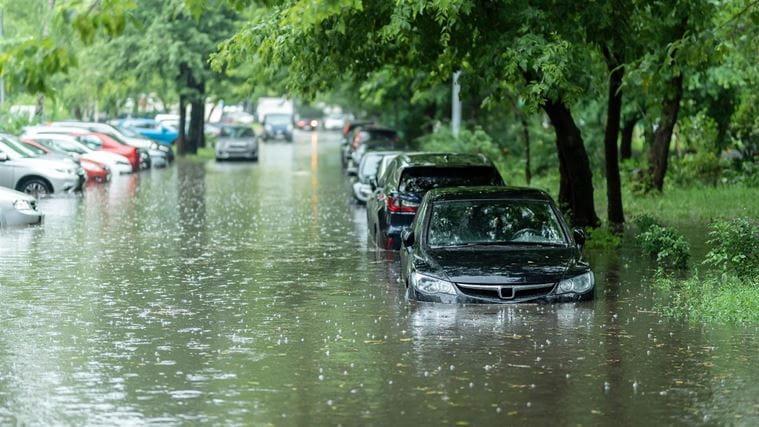Heavy Rainfall Risk Management: From Hazard Map to Action Plan

What characterises heavy rainfall events and what are their impacts?
Dr Klaus Piroth: The term "heavy rainfall" refers to localised, extremely intense precipitation events. In a short period of time, so much rain can fall that conventional drainage systems – such as ditches, stormwater sewers, and retention basins – become overwhelmed and largely ineffective. The result is widespread flooding. Small streams can turn into raging torrents, and streets may become indistinguishable from waterways.
Why are traditional flood protection measures only partially effective against heavy rainfall?
Dr Klaus Piroth: This is mainly due to the localised nature of these events, their impacts often occurring away from major watercourses, and, most significantly, the very short lead time – often less than an hour. Conventional flood protection measures are designed to manage expected water flows within rivers or streams. In contrast, there are few technically viable solutions to protect against localised heavy rainfall.
Only those who are aware of the dangers and risks can take targeted protective measures and prioritise key areas.
Why do we recommend heavy rainfall risk management to our clients?
Dr Klaus Piroth: Heavy rainfall can affect anyone. Its impacts can vary greatly depending on the location. Using hazard and risk maps for heavy rainfall, site-specific measures can be identified, helping people to prepare as best as they can. Increasingly, local communities are aware of the issue and actively seek advice. Only by knowing who or what is at risk, can we develop appropriate protection measures and set priorities.
What aspects must be considered in heavy rainfall risk management?
Dr Klaus Piroth: The process begins with the creation of hazard maps, which indicate areas likely to flood during a localised heavy rainfall event. Flow velocities are also important, especially in steeper terrain. By overlaying these maps with land-use data, risk maps can be produced. These highlight where damage is likely and where lives may be at risk. In a third step, action plans are developed – ranging from technical interventions to preventive measures and protection strategies for people and property.
About CDM Smith
CDM Smith is a privately owned engineering and construction firm providing legendary client service and smart solutions in water, environment, transportation, energy and facilities. Passionate about our work and invested in each other, we are inspired to think and driven to solve the world's environmental and infrastructure challenges.

Heavy rainfall risk management is essential for identifying local risks early and site-specific targeted measures.
